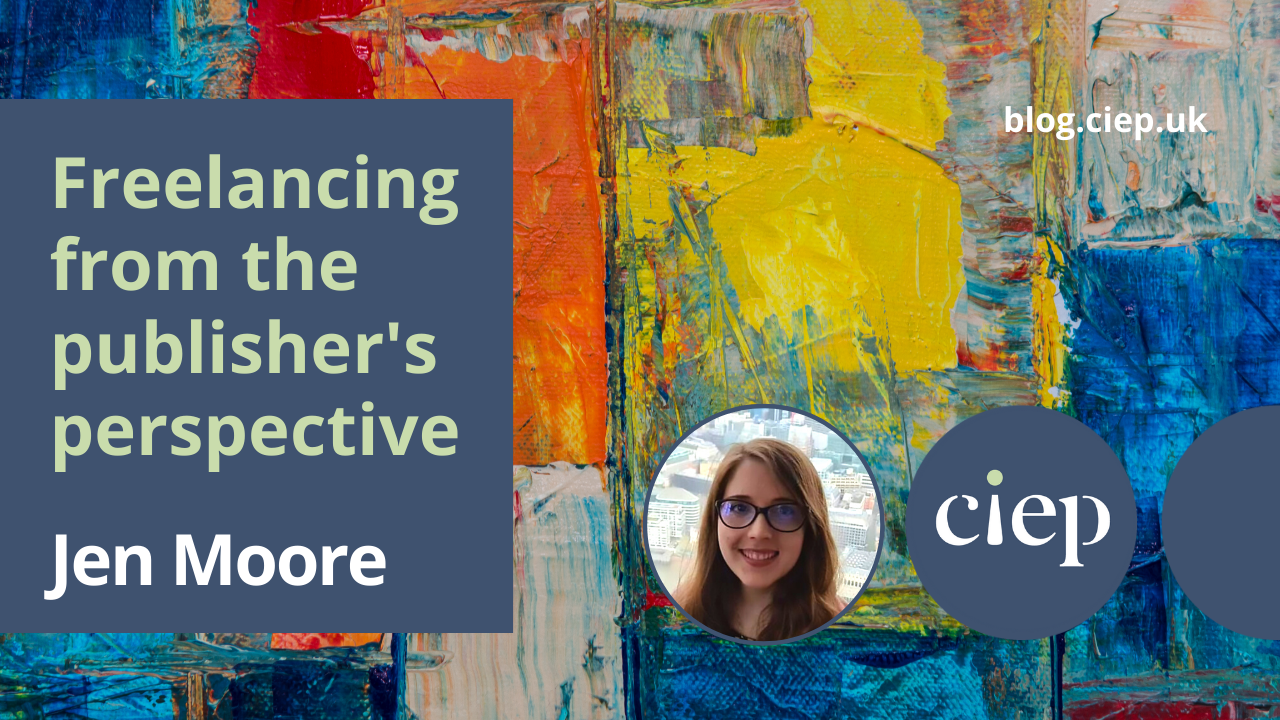Jen Moore is an in-house editorial manager for the publisher Thames & Hudson. In this post she discusses what types of jobs they use freelance editors for, how they find new editors, how they determine fees, and what qualities turn a freelance editor into one of their trusted favourites.
Thames & Hudson is an independent publisher of illustrated books that publishes books on art, architecture, history and visual culture of all kinds. We have an expanding children’s list and a division producing textbooks for the American college market, but in the main our books are trade titles aimed at readers with a general personal or professional interest (but not necessarily a specialist academic background) in a particular subject area. In-house editors generally manage between four and six titles at once, which they will often – but not always – copyedit themselves. When they don’t, and for titles not managed in-house, we are reliant on freelancers.
When and why do we use freelance editors in favour of in-house staff?
The economics of publishing, and especially illustrated publishing, are getting tougher, and the number of full-time in-house editors has gradually declined over the past few years. But as a house we publish more books than ever (around 200 a year), and good books still need thorough editing, so it’s inevitable that we are using more freelance staff than before.
But it’s not just a question of in-house capacity. There are also positive arguments in favour of using freelance staff. For one, freelancing is an excellent way to keep a very clear handle on the costs of a project. Working with freelance editors means that someone has to prepare a brief and propose a fee, analysing the materials that the author has supplied very thoroughly and estimating how many hours it should reasonably take, and the appropriate budget. The efficiency savings of all that up-front thinking and planning can be considerable.
Some books are much better suited to freelancing than others. In some cases, the text, images and layout come together by an organic, interdependent process, and the different roles and stages in the production workflow cannot be clearly defined. These projects generally require close teamwork by a very hands-on, in-house team and are not suited to freelancers.
The most straightforward books to freelance are those where the author submits a complete manuscript; a picture researcher gathers images according to a pre-determined list; and these elements will be brought together into a layout by the designer. Usually we will copyedit the text in Word while the images are being assembled – in that case the editing is ideally suited to a freelancer. Some titles follow an opposite track: images are arranged in a layout, then the text is written to fit the space allowed. These titles are also straightforward to freelance, except that they have to be edited in layout, so we need editors with the skills and software to do that.
What tasks do we offer freelancers?
The most obvious one is copyediting, whether this is to be done in Word or in InDesign layouts. That may entail just a light review for consistency and typos, or it may involve extensive rephrasing, rewriting, abridging, fact-checking, plagiarism-checking and drafting captions. Generally, we prefer the copyeditor to liaise with the author directly to secure approval of the edits. This is more satisfying and gratifying for the editor; and it represents a big in-house time-saving. We also offer proofreading and indexing work to freelancers.
But actually, from our point of view, the copyediting is often the most straightforward part of the editorial job. All books also need an editorial project manager, someone to:
- discuss and agree the layouts with the designer and author
- chase up captions and any missing elements from the author
- take in proof corrections
- compile prelims
- commission and edit the index
- review picture proofs, final text pdfs and plotter proofs
- write the jacket blurb and request an author biography and photo
- check jacket proofs.
There are deadlines for all of these tasks, and they involve liaison with multiple in-house staff across various departments. If the freelance editor is only copyediting, then all of these tasks have to be undertaken by an in-house editor who may not actually know the book that well, and so may not make the best decisions or write the best copy. To do the full project-management job requires quite an advanced set of skills – at the very least confidence in dealing with authors, designers and so on, as well as proficiency in InDesign. By and large, it requires experience of working as an in-house editor on an illustrated list.
All of this may sound like a big ask, but we do expect to mentor freelancers to get them up and running in this role. For the right people, it’s well worth the investment of our time. And project management doesn’t have to be all or nothing – you don’t need InDesign, for example, to draft a blurb or edit captions. Freelancers who want to take on more than the copyediting or proofreading should initiate a discussion about what they can offer.
How we find our freelancers
We have a list of tried and tested people, of course, but they move on, they take jobs, they get booked up. So we’re always on the lookout for new editors, and if your skills are a good fit for our list, then we are glad to receive your CV! Naturally, we are looking for people with proven editorial experience and relevant subject knowledge gained in an educational or professional context. Beyond that, we seek individuals who are happy to take initiative and work autonomously, as well as being effective communicators who will keep their in-house point of contact informed – but not over-informed! – of their progress.
We have a short, sticky editorial test. But a test is not enough to tell me whether an editor:
- is able to exercise judgement about how much to intervene
- has the stamina and conscientiousness to apply consistent standards across a whole text
- has sufficient general knowledge and awareness to know what they don’t know (without having to fact-check everything), and to flag problems around sensitivity or inclusivity
- has the flexibility to work with differing styles of writing and different subject matter
- has the confidence and courtesy to win the trust and respect of an author
- and has an understanding of the legalities of publishing (if our in-house reviews have missed potentially libellous content, for example, we are reliant on the freelance editor to alert us to it).
When working with a new editor, I will ask for a sample edit while the job is still in its early stages, and keep a close eye/ear on that editor’s work and their reputation among my colleagues.
How fees are negotiated and paid
To enable us to keep a handle on freelance costs, we always aim to agree a fee up-front, at the point of handing the materials and brief over to the editor. If it’s a straight copyediting job, this will be calculated on:
- the number of words
- the degree of complexity or specialisation of the subject matter
- the quality of the writing and level of intervention required
- how tidily presented the text is
- whether there is endmatter, and how well-compiled it is
- whether there are extremely tight deadlines
- whether the editor will liaise directly with the author.
Determining fees is not an exact science, and depends on both parties assessing the materials in detail and agreeing to the estimate of how much work is required. There is often room for negotiation, but if I don’t think the job is worth any more than I’ve put on the table, I won’t shift on the fee. I will, however, revisit an agreed fee if the project proves more complicated than could have been anticipated at the briefing stage. But it’s really important that the freelancer alerts their contact as soon as this is apparent. Our budgets are tight, and must cover many more elements than the edit.
Making the transition from trial to trusted freelancer
We’re looking for people who do an excellent, accurate, timely, thorough, professional job of the editing. Truly talented editors are rare. When we find them, we stay in touch. And if it’s been a while between jobs, I am very happy to receive an email reminding me that you are out there, or an updated CV letting me know what you have been up to!
About Jen Moore
Jen Moore is the Editorial Manager of the History & Archaeology list at Thames & Hudson. She studied Archaeology & Anthropology at the University of Cambridge, specialising in Egyptology, and has been working in publishing for eight years.
 About the CIEP
About the CIEP
The Chartered Institute of Editing and Proofreading (CIEP) is a non-profit body promoting excellence in English language editing. We set and demonstrate editorial standards, and we are a community, training hub and support network for editorial professionals – the people who work to make text accurate, clear and fit for purpose.
Find out more about:
Photo credits: canvas by Steve Johnson, person working by Vlada Karpovich, books by Jonathan Borba, all on Pexels.
Posted by Harriet Power, CIEP information commissioning editor.
The views expressed here do not necessarily reflect those of the CIEP.




Thank you for such an interesting and insightful post. It’s rare to hear the perspective of publishers, or any other clients for that matter. As a freelancer who is aiming to increase the number of clients I edit/proofread for, it was really useful to find out how the editing process works at Thames & Hudson, and also what makes a valued editor.
Thank you so much, Jen!
Your blog was very timely and incredibly helpful. I have worked for many years in the health and wellness industry and hope to apply this knowledge and experience, along with my editing and people skills, to become a freelance editor for a publishing company. I now have a better insight into what the position involves.
Thanks again!
What a super article, Jen. I’m sure it will be very useful for new freelancers, and even for established ones who haven’t worked in-house, or who are hoping to expand the scope of their work.
This is such a helpful article which really gives an insight into the publisher’s perspective. As someone who is starting out as an editorial freelancer, it highlights to me the importance of demonstrating not just high-quality editorial skills, but also excellent communication skills. It is also interesting to hear more about Thames & Hudson’s process of hiring editors and how the editorial test and sample edits are used. I will definitely be referring back to this article as I move forward with my freelancing career.